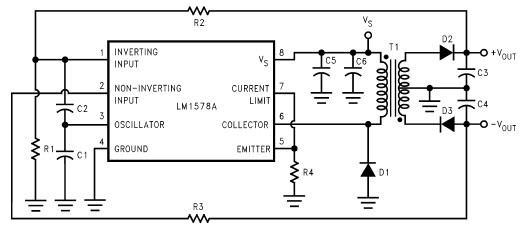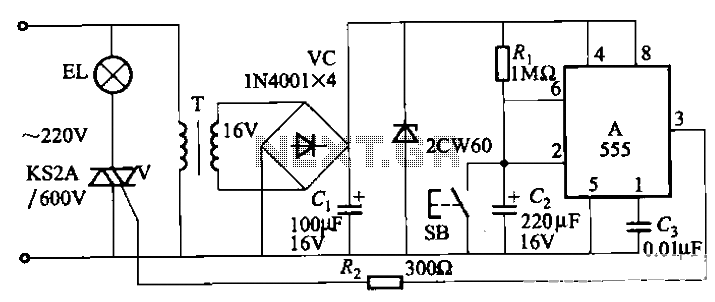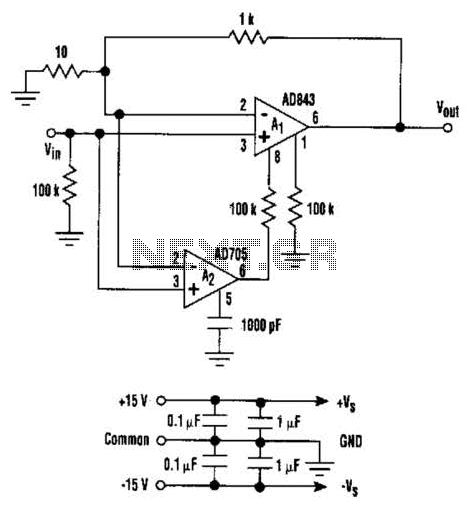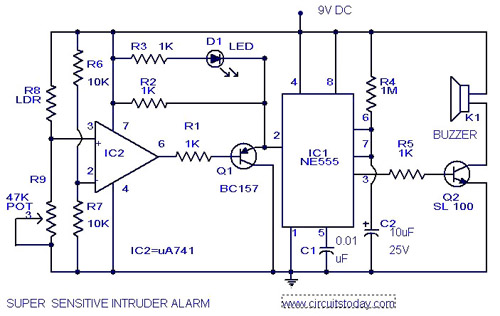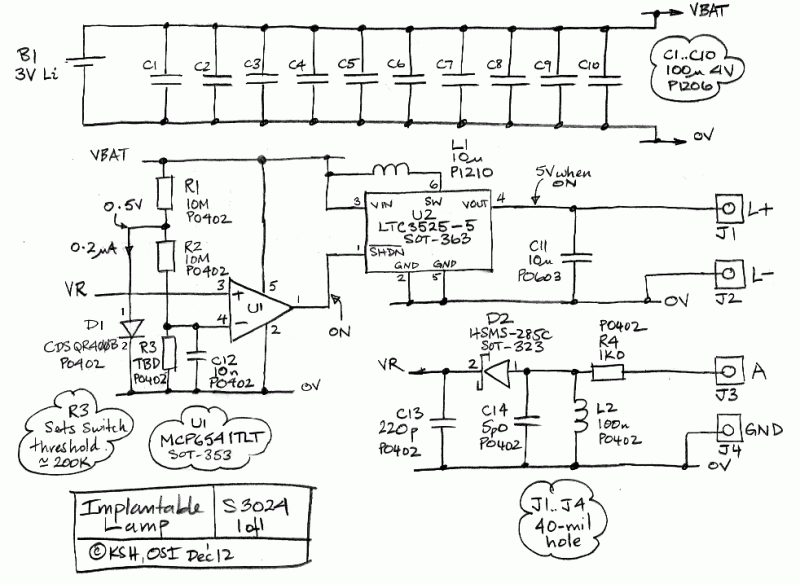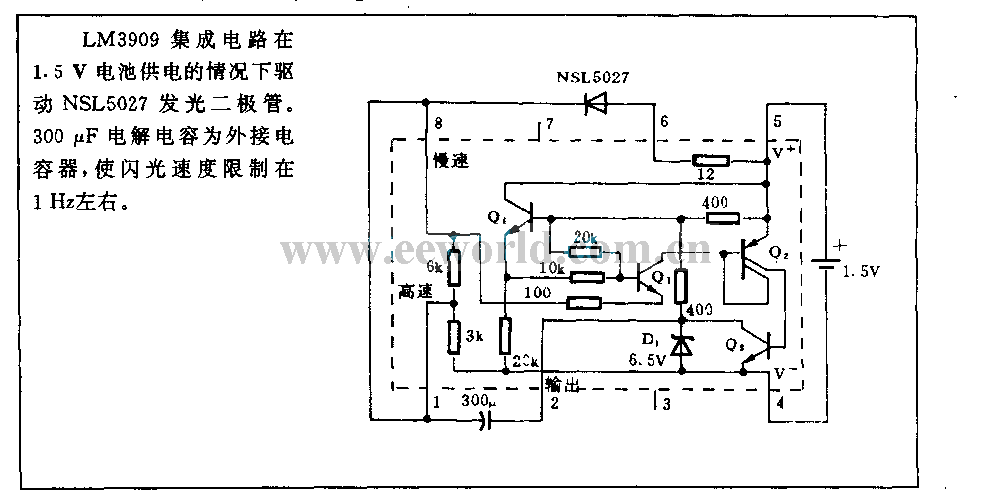
450 800Hz signal generator circuit diagram
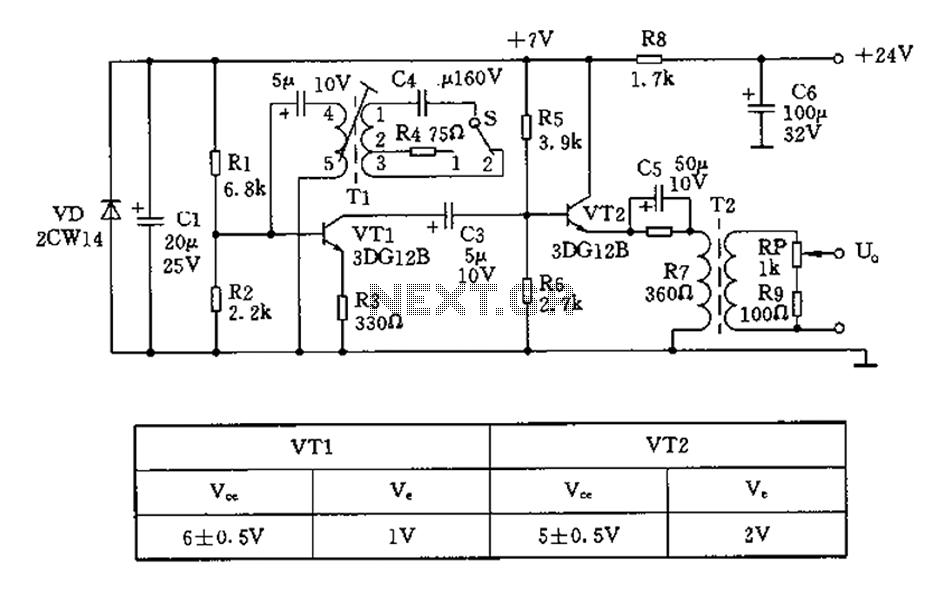
The 450/800Hz oscillation circuit depicted in the figure utilizes transformer coupling. The frequency conversion is achieved by varying the inductance through a variable filter tap (T1). When the switch control signal (S) is set to position 1, the oscillator circuit formed by components C4 and T1 generates a frequency of 800Hz, with the output taken from the emitter of VT2 and adjustable via the potentiometer (RP). The amplitude of the 800Hz output can be modified by adjusting the RP potentiometer. The resistor R4 in the oscillation circuit is used to fine-tune the amplitude of the 800Hz oscillation. When the switch (S) is set to position 2, the components C1-3 and T1 determine the oscillation frequency, which is 450Hz. The T1 component has a threaded adjustment lever that allows for precise tuning of the oscillation frequency.
The described 450/800Hz oscillation circuit is a versatile electronic oscillator that employs a transformer coupling method to achieve frequency conversion. The circuit operates by utilizing a variable filter tap (T1) which allows for the adjustment of inductance, thus enabling the selection of different oscillation frequencies.
In position 1 of the switch control signal (S), the oscillator circuit is configured with capacitors C4 and T1, producing an output frequency of 800Hz. The output signal is derived from the emitter of the transistor VT2, which acts as an amplifier in the circuit. The output level can be adjusted using the potentiometer (RP), allowing for fine control over the amplitude of the 800Hz signal. The resistor R4 serves a crucial role in regulating the oscillation amplitude, ensuring that the output remains stable and within desired parameters.
When the switch is toggled to position 2, the oscillation frequency changes to 450Hz. This is achieved through the interaction of capacitors C1-3 and T1, which together determine the new frequency. The T1 component is equipped with a threaded adjustment lever, providing a means for precise frequency tuning. This feature is particularly beneficial for applications requiring exact frequency specifications.
Overall, the 450/800Hz oscillation circuit is designed for flexibility and precision, making it suitable for various electronic applications where specific frequency outputs are necessary. The use of transformer coupling enhances the circuit's performance by allowing for efficient signal transfer and amplification.450/800Hz oscillation circuit shown in FIG oscillator is a transformer coupling. The frequency conversion is made different inductance is achieved by changing the oscillation t ank variable filter tap Tl. Pull the switch control signal S to 1 block, l-2 oscillator circuit C4 and Tl end and then a frequency of 800Hz, by VT2 emitter output to RP potentiometer adjustable arm output. By adjusting potentiometer RP can change the 800Hz output size. Oscillation circuit resistor R4 for adjusting 800Hz oscillation amplitude. S to pull the 2 block, C 1-3 and T1 phase, the oscillation frequency is 450Hz. T1 threaded adjustment lever to adjust trimming oscillation frequency.
The described 450/800Hz oscillation circuit is a versatile electronic oscillator that employs a transformer coupling method to achieve frequency conversion. The circuit operates by utilizing a variable filter tap (T1) which allows for the adjustment of inductance, thus enabling the selection of different oscillation frequencies.
In position 1 of the switch control signal (S), the oscillator circuit is configured with capacitors C4 and T1, producing an output frequency of 800Hz. The output signal is derived from the emitter of the transistor VT2, which acts as an amplifier in the circuit. The output level can be adjusted using the potentiometer (RP), allowing for fine control over the amplitude of the 800Hz signal. The resistor R4 serves a crucial role in regulating the oscillation amplitude, ensuring that the output remains stable and within desired parameters.
When the switch is toggled to position 2, the oscillation frequency changes to 450Hz. This is achieved through the interaction of capacitors C1-3 and T1, which together determine the new frequency. The T1 component is equipped with a threaded adjustment lever, providing a means for precise frequency tuning. This feature is particularly beneficial for applications requiring exact frequency specifications.
Overall, the 450/800Hz oscillation circuit is designed for flexibility and precision, making it suitable for various electronic applications where specific frequency outputs are necessary. The use of transformer coupling enhances the circuit's performance by allowing for efficient signal transfer and amplification.450/800Hz oscillation circuit shown in FIG oscillator is a transformer coupling. The frequency conversion is made different inductance is achieved by changing the oscillation t ank variable filter tap Tl. Pull the switch control signal S to 1 block, l-2 oscillator circuit C4 and Tl end and then a frequency of 800Hz, by VT2 emitter output to RP potentiometer adjustable arm output. By adjusting potentiometer RP can change the 800Hz output size. Oscillation circuit resistor R4 for adjusting 800Hz oscillation amplitude. S to pull the 2 block, C 1-3 and T1 phase, the oscillation frequency is 450Hz. T1 threaded adjustment lever to adjust trimming oscillation frequency.
Warning: include(partials/cookie-banner.php): Failed to open stream: Permission denied in /var/www/html/nextgr/view-circuit.php on line 713
Warning: include(): Failed opening 'partials/cookie-banner.php' for inclusion (include_path='.:/usr/share/php') in /var/www/html/nextgr/view-circuit.php on line 713
